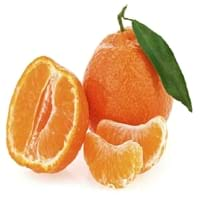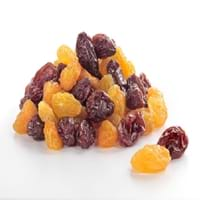Health Benefits
Cancer prevention, Heart care, Increases metabolic rate, Reduces stress
Acidity treatment, Cancer prevention, Good for diabetics, Prevents constipation, Prevents Anaemia
General Benefits
Boosts immune system, Controls blood pressure, Digestive aid, Eye care, Helps in weight loss
Boosts immune system, Cures fever, Eye care, Fights against infections, Strengthens bones
Skin Benefits
Brightens and lightens complexion, Treatment of acne, Treatment of dark spots
Anti-aging benefits, Reduces wrinkles, Skin rejuvenation
Hair Benefits
Promotes longer and healthier hair, Protects hair
Protects hair
Allergy Symptoms
Abdominal pains, Breathing difficulty, Coughing, Diarrhea, Drop in blood pressure, Fainting, Runny nose, Skin rash, Sneezing, Swelling of mouth, tongue or lips, Vomiting
Anaphylaxis, Asthma, Breathing difficulty, Coughing, Drop in blood pressure, Hives, Skin rash, Stuffy nose, Swelling of mouth, tongue or lips, Wheezing
Side Effects
Allergic reaction
Allergic reaction
Lactating Women
No
Not Available
Best Time to Eat
As a snack in the late afternoon, Don't consume at night and before bed, Eat the fresh ones, avoid mixing with any other foods, don't eat after meal., Morning time (before lunch)
Any time except an hour after meal
Vitamin A (Retinol)
Not Available
Vitamin B5 (Pantothenic Acid)
Vitamin C (Ascorbic Acid)
Vitamin K (Phyllochinone)
Lutein+Zeaxanthin
Not Available
Calories in Fresh Fruit with Peel
Not Available
Calories in Fresh Fruit without Peel
Not Available
Calories in Frozen Form
Not Available
Not Available
Calories in Dried Form
Not Available
Not Available
Calories in Canned Form
Not Available
Not Available
Season
Autumn
All seasons
Varieties
Clemenules or Nules and Nadorcott
Dark raisins, White or golden raisins, Sultanas and Currants
Seedless Variety
No
Not Available
Color
Orange
Black, Blue, Green, Purple, Yellow
Inside Color
Orange
Brown
Taste
Sweet, Tangy, Tart
Sweet
Origin
China
Central Europe, Western Asia
Grows on
Trees
Not Available
Soil Type
Loam, Sandy, Well-drained
Clay loam, Sandy loam
Climatic Conditions
Warm to hot climate
Warm
Facts about
- Clementine was first grown at the citrus research center in USA in 1909.
- It is called as"Christmas orange" as it's limited growing season falls during winter.
- It's a hybrid between Mediterranean and Oranges.
- 30th April is known as National Raisin Day.
- Fresno, California is known as raisin capital of the world.
- Half of world's raisin supply is produced in California.
Top Producer
Spain
United States of America
Other Countries
Argentina, Brazil, Egypt, Italy, Japan, Morocco, Turkey, United States of America
Afghanistan, Argentina, Australia, Chile, China, Iran, South Africa, Turkey, Uzbekistan
Top Importer
United States of America
Europe
Top Exporter
Spain
Turkey
Botanical Name
Citrus clementina
Vitis Vinifera
Synonym
Not Available
Not Available
Subkingdom
Tracheobionta
Tracheobionta
Division
Magnoliophyta
Magnoliophyta
Class
Magnoliopsida
Magnoliopsida
Subclass
Rosidae
Not Available
Species
C. clementina
Vitis vinifera
Generic Group
Citrus fruit
Grape
Difference Between Clementine and Raisin
We might think that Clementine and Raisin are similar with respect to nutritional value and health benefits. But the nutrient content of both fruits is different. Clementine and Raisin Facts such as their taste, shape, color, and size are also distinct. The difference between Clementine and Raisin is explained here.
The amount of calories in 100 gm of fresh Clementine and Raisin with peel is Not Available and 299.00 kcal and the amount of calories without peel is 47.00 kcal and Not Available respectively. Thus, Clementine and Raisin belong to and category.These fruits might or might not differ with respect to their scientific classification. The order of Clementine and Raisin is Sapindales and Vitales respectively. Clementine belongs to Rutaceae family and Raisin belongs to Vitaceae family. Clementine belongs to Citrus genus of C. clementina species and Raisin belongs to Vitis genus of Vitis vinifera species. Beings plants, both fruits belong to Plantae Kingdom.









